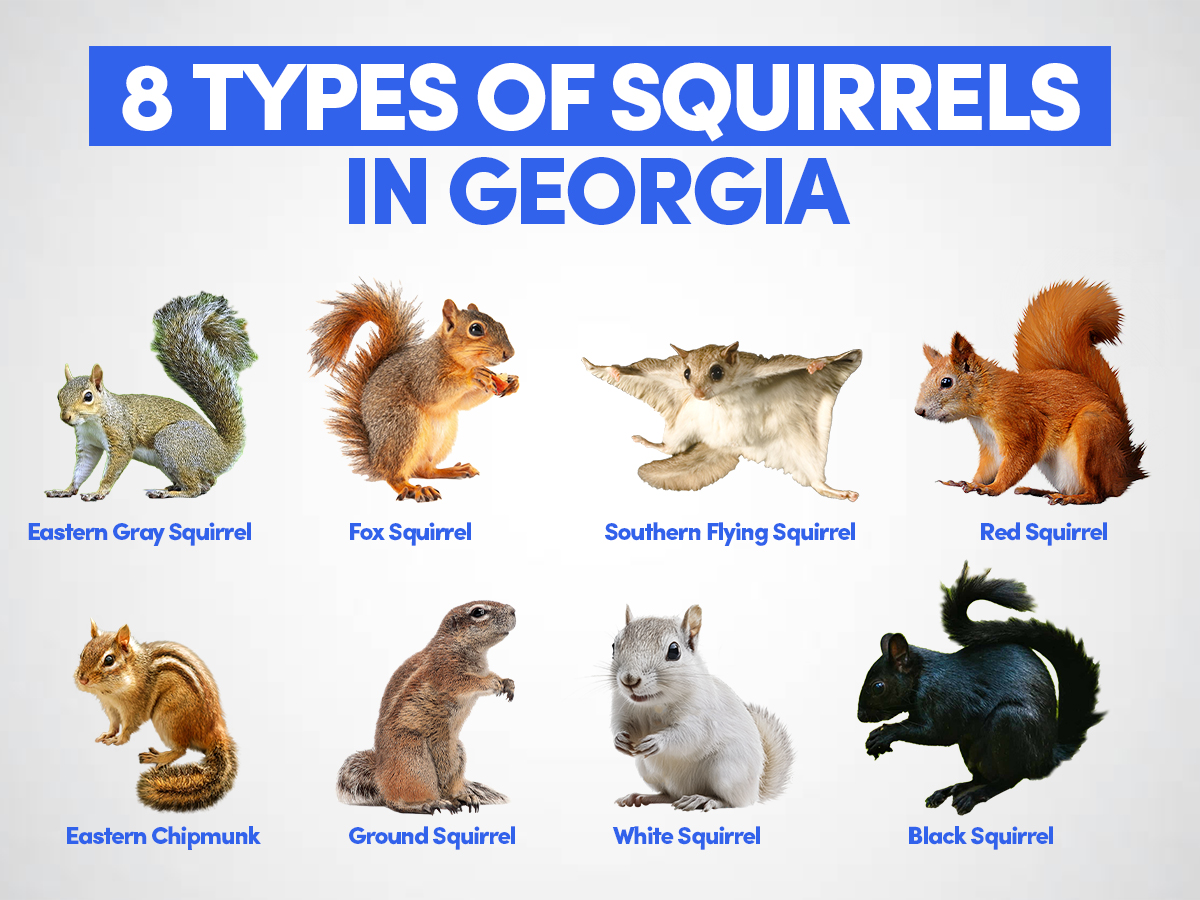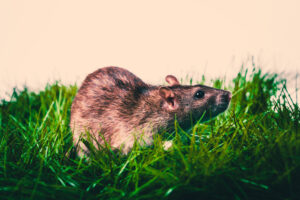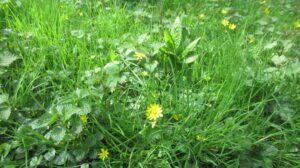Are squirrels wreaking havoc in your attic or chewing through your garden? Georgia is home to several types of squirrels, each with unique behavior. These critters have a competitive nature and can cause significant damage to the food and properties. Understanding these Georgia squirrels species is the first step toward effective pest control and prevention.
From the familiar Eastern Gray Squirrel to the elusive Southern Flying Squirrel, they may seem harmless, but they can chew through wires, damage insulation, and create unsanitary conditions in your home.
Don’t let squirrels of Georgia disrupt your peace of mind! Explore our guide to learn about the types of squirrels in Georgia, their behaviors, and what’s the best way to prevent or manage infestations. Contact our pest control experts today for professional, tailored solutions!
1. Eastern Gray Squirrel
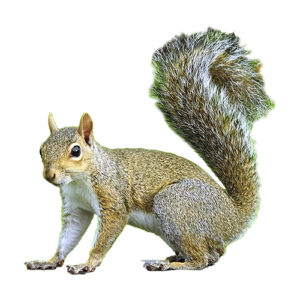
| Attribute | Details |
|---|---|
| Scientific Name | Sciurus carolinensis |
| Size | 16–21 inches (40–53 cm) in length, including the tail |
| Weight | 14–21 ounces (400–600 grams) |
| Appearance | Medium-sized, with gray fur and white underbellies |
| Habitat | Wooded areas, urban parks, and backyards |
| Behavior | Active during the day; known for burying acorns for future use |
| Diet | Nuts, seeds, fruits, and occasionally insects |
Fun Fact: They are excellent climbers and can leap significant distances between trees.
2. Fox Squirrel
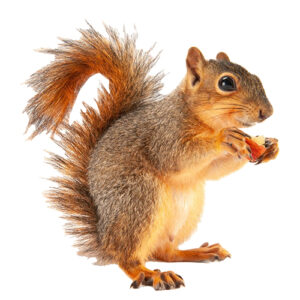
| Attribute | Details |
|---|---|
| Scientific Name | Sciurus niger |
| Size | 18–27 inches (46–69 cm) in length, including the tail |
| Weight | 1.5–2.5 pounds (700–1,100 grams) |
| Appearance | Larger than gray squirrels, with orange-brown fur and black-tipped tails |
| Habitat | Prefers open woodlands, especially areas with large oak or pine trees |
| Behavior | Less common in urban areas, often solitary |
| Diet | Acorns, pine seeds, berries, and fungi |
Fun Fact: Known as the largest tree squirrel in North America.
3. Southern Flying Squirrel
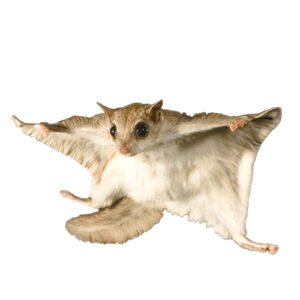
| Attribute | Details |
|---|---|
| Scientific Name | Glaucomys volans |
| Size | 8–10 inches (20–25 cm) in length, including the tail |
| Weight | 1.5–2.5 ounces (43–70 grams) |
| Appearance | Small, with soft gray-brown fur, white belly, and a flattened tail |
| Habitat | Lives in mature forests with plenty of tree cavities |
| Behavior | Nocturnal; uses its gliding membrane to move from tree to tree |
| Diet | Nuts, seeds, fruits, and tree sap |
Fun Fact: They are rarely seen due to their nocturnal habits but are the most common flying squirrel species in Georgia.
4. Red Squirrel
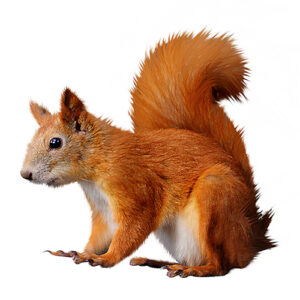
| Attribute | Details |
|---|---|
| Scientific Name | Tamiasciurus hudsonicus |
| Size | 11–14 inches (28–36 cm) in length, including the tail |
| Weight | 7–12 ounces (200–340 grams) |
| Appearance | Small, reddish-brown fur with a white belly and a bushy tail |
| Habitat | Found in coniferous forests, particularly in North Georgia |
| Behavior | Territorial and often vocal, using loud chattering to warn others |
| Diet | Pine cones, seeds, nuts, and mushrooms |
Fun Fact: Red squirrels Georgia are known for creating “middens,” piles of leftover food and debris near their nests.
5. Eastern Chipmunk
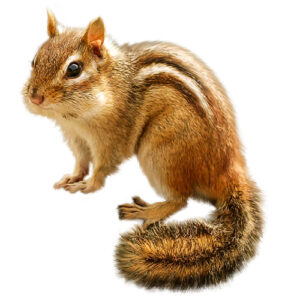
| Attribute | Details |
|---|---|
| Scientific Name | Tamias striatus |
| Size | 8–10 inches (20–25 cm) in length, including the tail |
| Weight | 2–5 ounces (56–140 grams) |
| Appearance | Small and ground-dwelling, with brown fur and black-and-white stripes on the back |
| Habitat | Prefers forest edges, gardens, and rocky areas |
| Behavior | Builds extensive burrows underground; gathers and stores food for winter |
| Diet | Seeds, nuts, fruits, and small insects |
Fun Fact: While technically not a tree squirrel, they belong to the squirrel family and are a common sight in Georgia.
6. Ground Squirrel
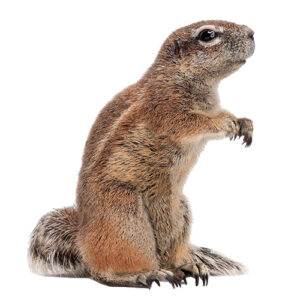
| Attribute | Details |
|---|---|
| Scientific Name | Spermophilus spp. |
| Size | Varies by species; generally 9–12 inches (23–30 cm) in length, including the tail |
| Weight | 5–11 ounces (140–310 grams) |
| Appearance | Brownish fur with lighter spots or stripes depending on the species |
| Habitat | Open grasslands, meadows, and occasionally suburban areas |
| Behavior | Lives in burrows; highly social and forms colonies |
| Diet | Grasses, seeds, and sometimes small insects |
Fun Fact: Ground squirrels in Georgia hibernate during the colder months.
7. White Squirrel
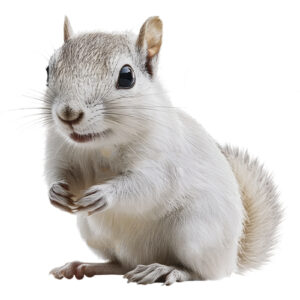
| Attribute | Details |
|---|---|
| Scientific Name | Sciurus carolinensis (color variant) |
| Size | 16–21 inches (40–53 cm) in length |
| Weight | 14–21 ounces (400–600 grams) |
| Appearance | White or cream-colored fur due to albinism (red eyes) or leucism (dark eyes) |
| Habitat | Found in urban areas, forests, and college campuses; a genetic anomaly of the Eastern Gray Squirrel |
| Behavior | Similar to gray squirrels; only differs in coloration |
| Diet | Nuts, seeds, fruits, and vegetables; same as Eastern Gray Squirrels |
Fun Fact: White squirrels are considered rare and often revered as local mascots in certain towns or regions.
8. Black Squirrel
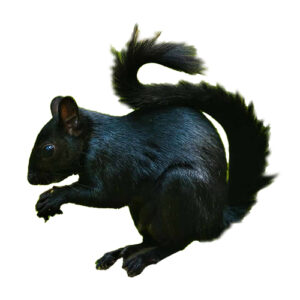
| Attribute | Details |
|---|---|
| Scientific Name | Sciurus carolinensis (melanistic variation) |
| Size | 16–20 inches (41–51 cm) in length, including the tail |
| Weight | 14–21 ounces (400–600 grams) |
| Appearance | Medium-sized with black fur due to a genetic mutation; may have faint gray or brown undertones in certain light |
| Habitat | Found in forested areas, urban parks, and suburban neighborhoods |
| Behavior | Active and adaptable; forages during the day; less vocal than red squirrels but can emit warning calls |
| Diet | Nuts, seeds, berries, and fungi; caches food for winter |
Fun Fact: Black squirrels Georgia are the result of melanism, a genetic trait that gives them their dark coloration, offering better camouflage in dense forests.
When Do Squirrels Have Babies in Georgia?
Squirrels in Georgia typically have babies twice a year, in late winter (January–February) and late summer (July–August). Gestation lasts about 44 days, and litters usually consist of 2–4 babies. The young are born blind and hairless, opening their eyes around 4 weeks. They leave the nest at 8–10 weeks old.
How Long Do Squirrels Live in Georgia?
In Georgia, squirrels typically live 6–12 years in the wild, with most surviving around 2–4 years due to predators and environmental factors. In captivity, they can live up to 20 years. Lifespan depends on species, habitat, and threats.
Take Away – Do You Need Pest Experts to Get Rid of Squirrels?
Squirrels may seem harmless, but they can cause significant damage to your property. Attempting to remove them on your own can be risky, as they are quick, territorial, and may even carry diseases or parasites. Professional pest experts, like Pest Force, have the experience and tools to safely and effectively handle squirrel infestations without harming the animals or your home.
Choosing a reliable service like Pest Force won’t make you regret your decision. With proven methods and a commitment to customer satisfaction, we provide peace of mind and long-lasting protection for your property. Don’t take chances—call the experts today!
